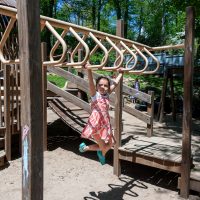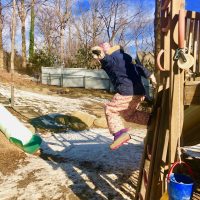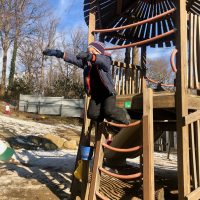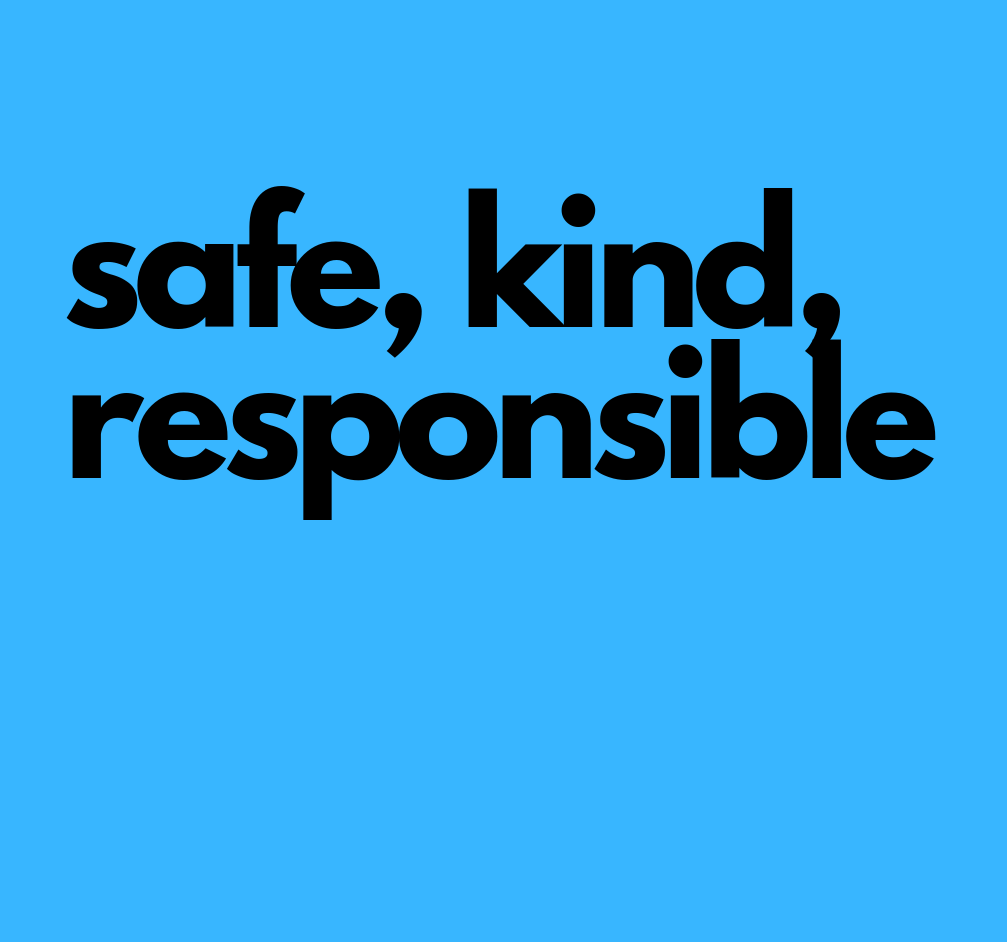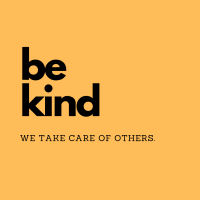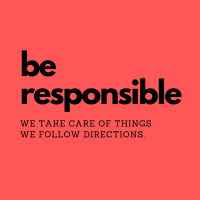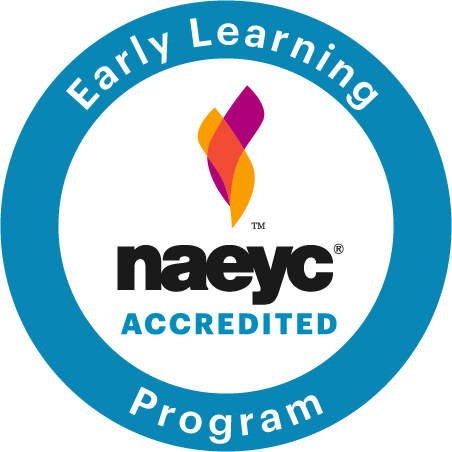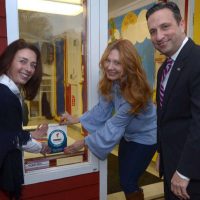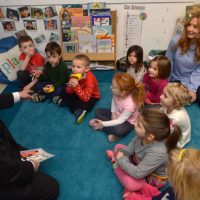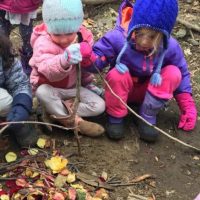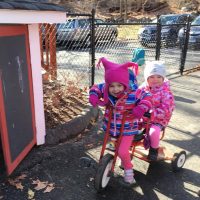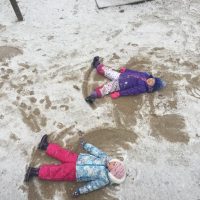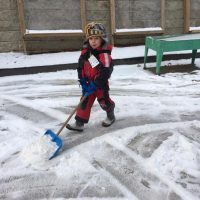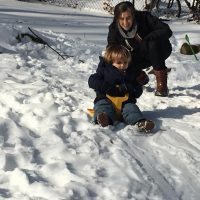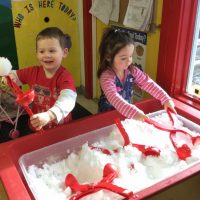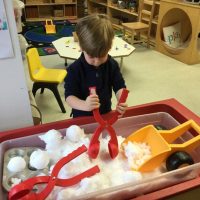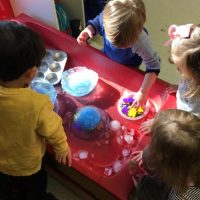Dropping a child off to school for the first time can be a traumatic experience for both the child and the caregiver. At CCNS, Twos Head Teacher, Lini Ecker, has developed a unique system to ease children in to the program resulting in much less separation anxiety. Lini often provides the example of dropping a toddler off to school for the first time as if one was dropped in a foreign country with no money, no transportation and a lack of ability to speak the language and then told to “go have fun!” The first few days of school can be very daunting especially for our youngest ones who usually do not have the language to express their needs and feelings. They often need to rely on the intuition of their caregivers to decipher their needs.
At CCNS, all of the children visit the classrooms with a caregiver before school begins to see their classrooms, meet their teachers and walk around with the safety of their caregiver right beside them. Usually that is enough for many of our Threes and Fours, especially since most of them have been at CCNS for the Twos program and/or Threes program and know the school a bit.
For the twos, the goal is to earn their trust and to make school seem really fun before they feel anxious, so that they WANT to return. The first day for our twos is only an hour long. The caregiver stays with the child in the classroom and only half the class attends. During this time, the teachers may ask the caregiver to step out of the room for a few minutes and use this time to gauge the level of separation anxiety for that child. This is individualized for each child. The children enjoy free play and a short story before heading home.
The following week the regular class time is shortened a bit. Caregivers are asked to arrive 30 minutes early and join the class in the outdoor classroom. They can choose to stay together and play or take their child home if he/she seems ready.
The regular classroom schedule of a two-and-a-half-hour day begins the third week with almost all the children eager to enter the classroom and find his/her favorite activity. For those with remaining separation anxiety, the teachers work individually with families to find the best plan to make the child feel safe and happy at school. This can include comfort items from home, a special routine upon arrival, a home visit and other techniques that the Twos team is adept at implementing.
This is the case in all of our classrooms. We read stories about leaving home, entering school and how caregivers always return. We set up special routines for children that may need extra comfort upon arrival and also work closely with families to help ease all of our students into their new classroom environment. We always try to send a photo home of the child who was left initially crying at drop off happily engaged in an activity to ease the separation anxiety for the caregiver. At CCNS working with families as a team is one of our most important goals. From our youngest children to our big kids, we want to make them all feel safe, secure and understood, so they can concentrate on their work: PLAY!

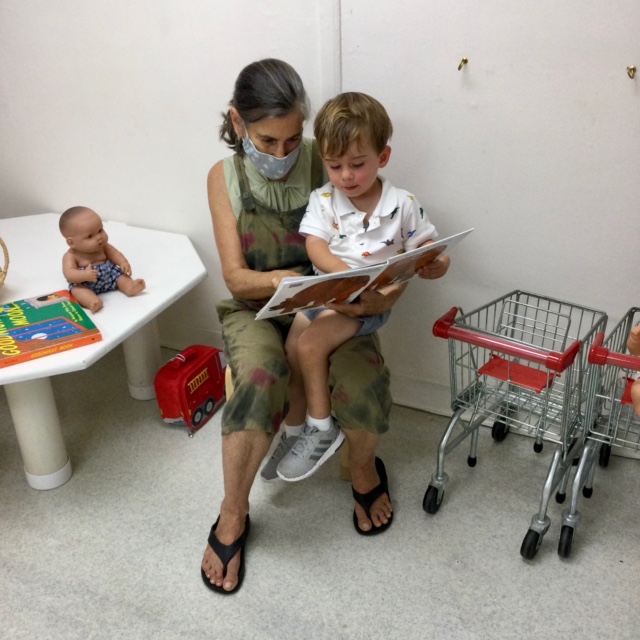
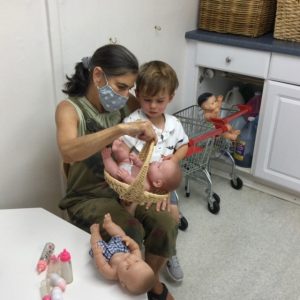
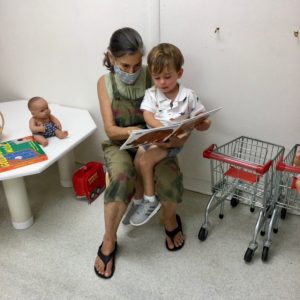
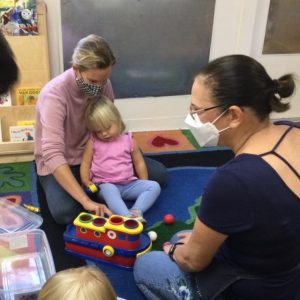
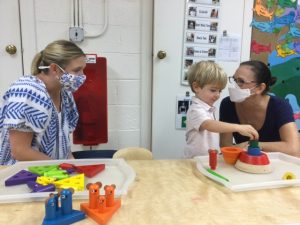
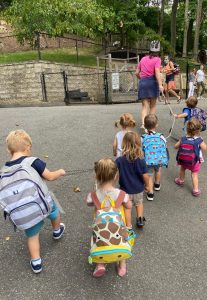
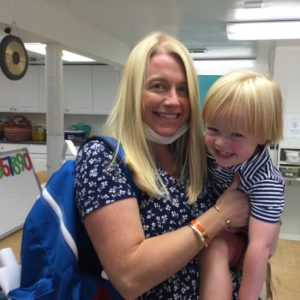
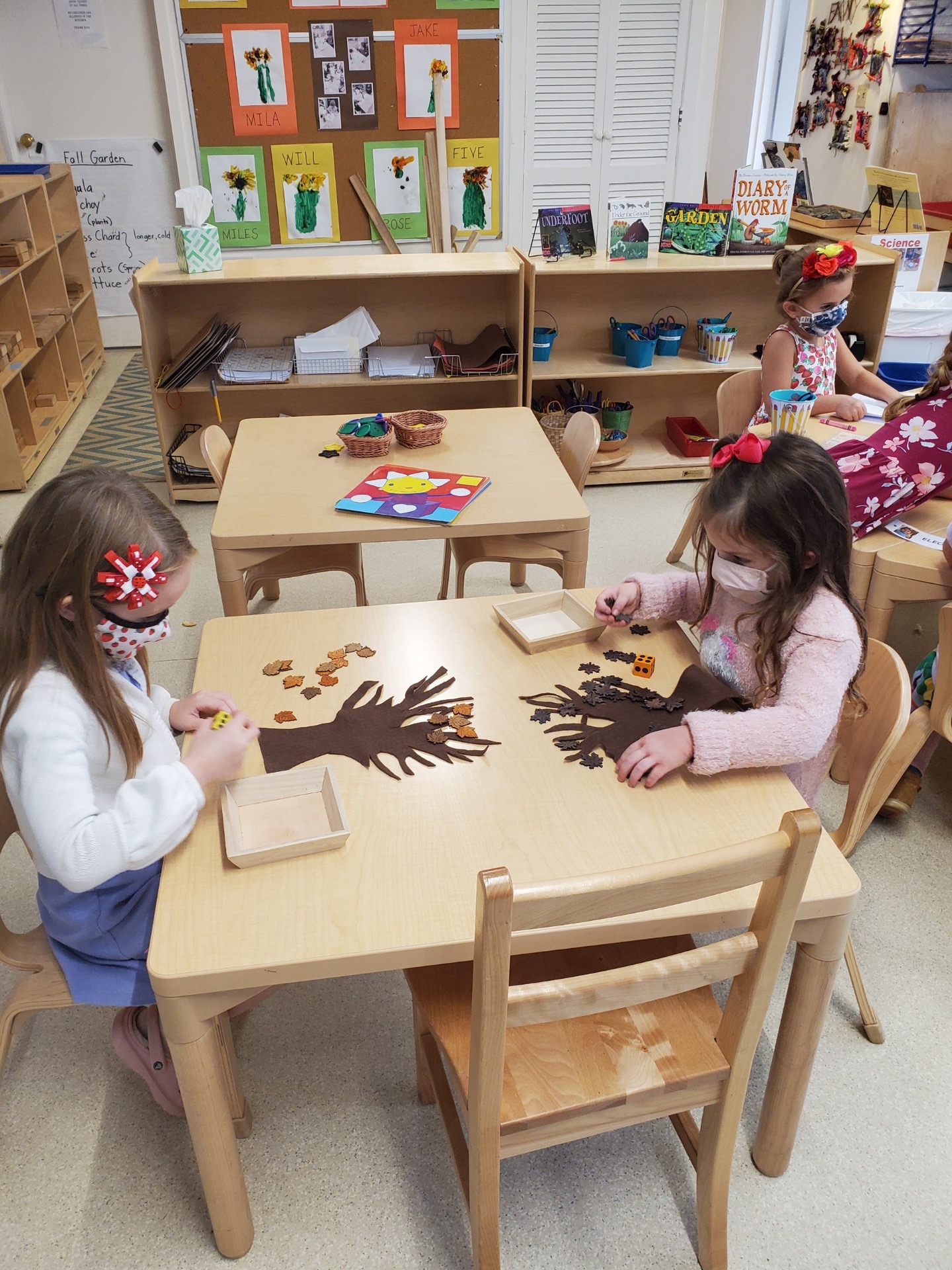
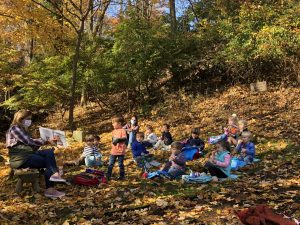 This fall, I have had the unique privilege of being a parent to a child in both the 2s and 4s class, a staff assistant in the 2s as well as a CCNS board member. In a year where we’re all limited by COVID-19, what has struck me the most is what has remained consistent. From the children’s eager run onto the playground, to the thoughtful weekly classroom setups; from teacher guidance that empowers, to joyful songs and stories, what CCNS has given its families is a return to a normal thing under abnormal circumstances.
This fall, I have had the unique privilege of being a parent to a child in both the 2s and 4s class, a staff assistant in the 2s as well as a CCNS board member. In a year where we’re all limited by COVID-19, what has struck me the most is what has remained consistent. From the children’s eager run onto the playground, to the thoughtful weekly classroom setups; from teacher guidance that empowers, to joyful songs and stories, what CCNS has given its families is a return to a normal thing under abnormal circumstances.

